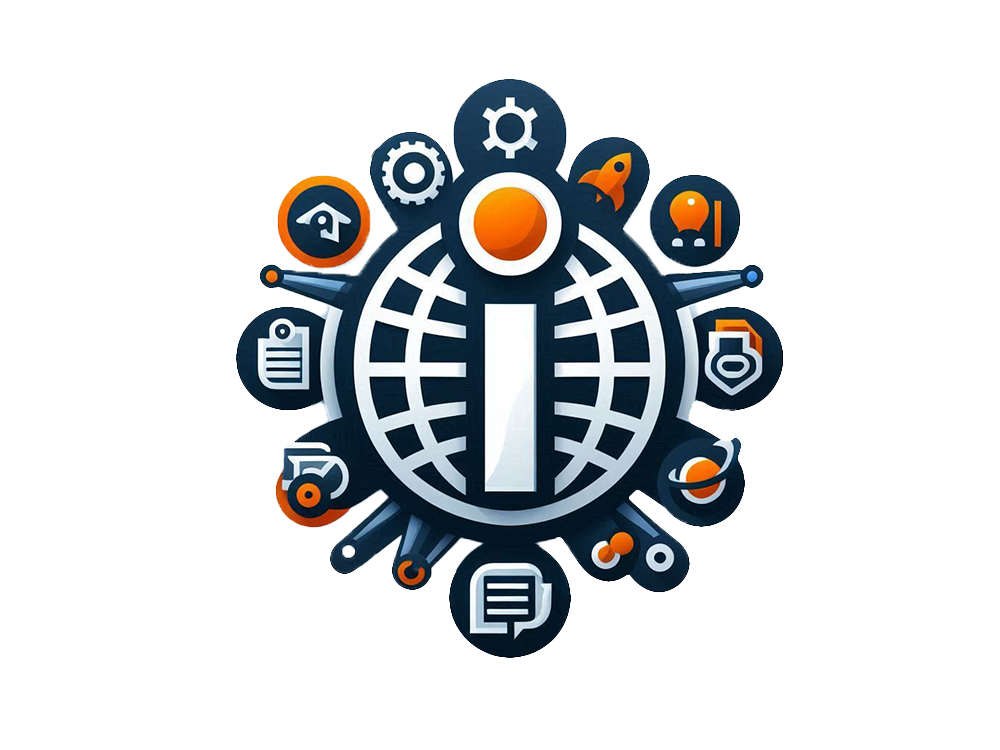In today’s world of cutting-edge technology, it is necessary to be as informed at all times. That said, there is one concept that seems to have been receiving considerable attention lately, and that is RSSAWEE. For any IT professional any manager or even somebody who wants to know the latest trends in the technological world, RSSAWEE can be very helpful in many aspects. But what is RSSAWEE? And why is it so crucial?
What is RSSAWEE?
Covertly, RSSAWEE refers to the Remote Systematic Security and Automated Workflow Enhancement Engine. It is a complex that combines several elements to provide efficiency in several segments of society. As compared to the more conventional systems, Automated Workflow Optimization System has its benefits in that it is a much more integrated system that is bound to be more effective and dependable.
There is no other website or application like Automated Workflow Optimization System because it has detailed features of automation, AI, and data analysis, making it a versatile program. It is this flexibility that separates RSSAWEE from other technologies, a reason why progressive organizations trust it.
The Evolution of RSSAWEE
However, to appreciate the extent and nature of RSSAWEE’s influence, it is pertinent to consider history. First implemented to manage and protect dynamic systems involving the automation of tasks, RSSAWEE has evolved through a few iterations. In every stage of its evolution, a new feature was added which has only enhanced its capabilities and functionality.
Historical Context
RSSAWEE was initially designed to be a straightforward utility designed for automating tasks. But with the introduction of new technology, programs like Automated Workflow Optimization System also emerged. It changed from a simple apparatus to a superior structure that can perform sundry operations. The path of development of RSSAWEE represents the general tendencies of the technological advancement of the last few decades.
Major Milestones
- 2005: First introduction of RSSAWEE limited at the beginning to undertake simple tasks in IT systems.
- 2010: The AI became integrated into the game, which was a real advancement.
- 2015: Implement capability to indicate data analytical competency that proportion prediction.
- 2020: The most recent release of the system with complete automation and production of desirable results including statistical prediction in numerous fields.
Key Components of RSSAWEE
For a better appreciation of Automated Workflow Optimization System, it is worth discussing its parts. These elements coordinate to form a closed system that achieves optimal performance in as cogent a manner as humanly possible.
Core Elements
- Automation: It forms the core of working in RSSAWEE where many tasks are handled as automatically as possible.
- Artificial Intelligence: supports decision-making by examining the information and the result that may ensue.
- Data Analytics: Gives performance information and assists in improving some processes.
How Each Component Functions?
- Automation saves the efforts that were earlier required to be put in manually.
- AI Intelligence: This adds intelligence to the system and the system becomes capable of learning from the previous data collected.
- Data Analytics means that every decision made is statistically relevant enhancing the accuracy of the process.
How RSSAWEE Works?
Automated Workflow Optimization System works following several sequential steps which are part of a closed-loop system and contribute to its effectiveness at large. Here’s a simplified breakdown:
Technical Overview
As for the technical aspects, Automated Workflow Optimization System leverages cloud computing, artificial intelligence procedures, and data processing in real-time; this makes it possible to acquire and improve automated processes. It is aimed to be highly user-friendly with a friendly graphical user interface that does not require technical input to use it.
Step-by-Step Process
- Data Collection: The data that Automated Workflow Optimization System collects comes from different sources.
- Data Processing: This includes the collected data, for analysis and processing into the various needed formats.
- Automation Execution: As a result of such analysis, the actions are automated within the system.
- Feedback Loop: This system learns and hence is dynamic and evolves with time.
Benefits of Implementing RSSAWEE
In turn, the adoption of Automated Workflow Optimization System can lead to certain STEs: RSSAWEE has many solutions for your needs whether you need a product that would help you reduce cost, increase performance, or improve efficiency.
Efficiency Improvements
Efficiency can therefore be considered as one of the most obvious advantages of the implementation of the approach. In that way, Automated Workflow Optimization System frees up time for routine activities, thus, making the best usage of resources among the teams.
Cost Savings
Nevertheless, it can be inferred that the utilization of Automated Workflow Optimization System can also help to decrease some of the operational costs. Less manual intervention means that there are few opportunities for errors or mistakes, therefore, costs linked with errors or slowness are minimized.
Enhanced Performance
As seen in the operations of Automated Workflow Optimization System, AI, and data analytics are integrated in such a manner that all operations are improved. This provides for enhancement of performance in as much as response time, and decision making, among other things, is concerned.
Challenges in Adopting RSSAWEE
As much as Automated Workflow Optimization System comes with many benefits, it has several challenges. Knowledge of these hindrances will assist you in encountering fewer difficulties while adopting.
Common Obstacles
- High Initial Costs: Concerning technology infrastructure, one has to understand that implementing RSSAWEE may entail an initial large investment.
- Learning Curve: There could be a transition period where the employees will require some time to get used to the new system that has been put in place.
- Integration Issues: In particular, matching the given system with other currently used systems can be problematic.
Solutions and Best Practices
- Budget Planning: Master resources for the first and second year to cover the costs of implementation and further development.
- Training Programs: Spend the time and resources with your team to bring them on board as fast as possible.
- Consultation: Coordinating with the existing professionals to complement its implementation with your existing programs.
- Applications of RSSAWEE in Various Industries
In such a way, Automated Workflow Optimization System is relatively diverse and generalizable suitable for usage in wide courses of study. Here’s how different sectors are leveraging this technology:
Manufacturing
In manufacturing, minimizing human input, Automated Workflow Optimization System is employed to control the production lines and make them standardized.
Healthcare
For the healthcare sector, it means an enhancement of the quality of patient treatment through the systems that accumulate information on patients’ states and give immediate feedback.
IT and Software Development
In IT, Automated Workflow Optimization System is disrupting the way projects are delivered, by providing improved features for the monitoring of projects and the execution of repetitive operations.
Case Studies: Successful Implementation of RSSAWEE
However, to make a better understanding of the effect of RSSAWEE, let’s consider some examples of its application.
Case Study 1: Manufacturing Giant
A manufacturing company that deals in production lines adopted the production system of RSSAWEE. The outcome has been enhanced throughput by approximately 30% and a decrease in product waste significantly.
Case Study 2: Healthcare Provider
Automated Workflow Optimization System was employed by a healthcare provider to track patient data discharge in real time. It also led to the development of better diagnostic techniques and treatments that enhance patient life span.
RSSAWEE vs. Competing Technologies
RSSAWEE is not the unique technology available, but it presents numerous advantages over more or less similar systems.
Comparative Analysis
- RSSAWEE vs. Traditional Systems: Automated Workflow Optimization System provides the use of automation and intelligence capabilities different from the conventional systems that require labor intensity.
- RSSAWEE vs. Other Modern Technologies: Other related technologies may exist but those of Automated Workflow Optimization System the fact that contain elements of Artificial Intelligence and data analysis.
Pros and Cons
- Pros: Reduce extra costs, improve efficiency, and better performance.
- Cons: High initial costs, take time to learn, always challenging to integrate.
The Future of RSSAWEE
Improvement in technology is likely to force improvements in Automated Workflow Optimization System as well. Forecasting the future can help you plan better thus embracing this idea can be greatly beneficial.
Predicted Trends
- Increased AI Integration: Hopefully RSSAWEE will have more sophisticated facilities to handle AI in subsequent versions.
- Expansion into New Industries: Overall, it can be said that RSSAWEE is likely to find applications in sectors currently unspecified.
Potential for Growth
There is considerable scope for RSSAWEE since it can be used in the existing markets as well as in the new ones.
Implementing RSSAWEE in Your Business
Below, we outline a set of considerations and working guidelines for anybody who wants to adopt RSSAWEE.
Step-by-Step Guide
- Assess Your Needs: Decide what it is you require from RSSAWEE.
- Choose the Right Tools: Select the components that best fit your needs.
- Plan Your Budget: Make sure you can support RSSAWEE in terms of resources for the implementation and sustainment of the intervention.
- Train Your Team: Allocate resources for training so the employees can be brought to par.
- Monitor and Adjust: There must be constant supervision of the whole system so that reforms can be done where necessary.
Tools and Resources
- Training Programs: Instead, one may take online courses and workshops to raise the level of understanding.
- Consultants: Seek the services of people who will assist in the implementation process.
Common Misconceptions About RSSAWEE
As with any complex technology, Automated Workflow Optimization System is still accompanied by legends and myths. It’s time to clarify or at least try to some of the most confusing ones.
Debunking Myths
- Myth: Hence, many think that Automated Workflow Optimization System is not suitable, especially for small businesses.
- Fact: RSSAWEE is scalable and may be integrated into small, medium, or large businesses.
Clarifying Misunderstandings
- Misunderstanding: Automated Workflow Optimization System will replace human jobs.
- Clarification: As will be shown in the following sections, RSSAWEE is not intended to dispose of human skills, but rather to augment them.
Conclusion
In conclusion, Automated Workflow Optimization System has been considered a powerful tool for providing many advantages for most industries. Basing our knowledge of its parts, advantages, and disadvantages, you may decide whether the Automated Workflow Optimization System suits your needs. In the ever-changing world of technology therefore keeping up with systems such as RSSAWEE could be the one thing that sets the Kenyan business future outlook.
FAQs
What is Automated Workflow Optimization System?
Automated Workflow Optimization System is an automation work appliance that utilizes artificial intelligence and data analytical work solutions in different fields.
How does RSSAWEE work?
It makes use of data collection and data processing as well as an application of artificial intelligence-based services.
What are the benefits of RSSAWEE?
They include efficiency improvement, rate reduction, and raised performance.
Which fields can be associated with the uses of RSSAWEE?
Automated Workflow Optimization System is all-round and can be implemented in production, medicine, information technology, and many other fields.
What are the challenges of implementing RSSAWEE?
Potential challenges relate to high start-up costs, skills in implementing this model, and compatibility problems.













